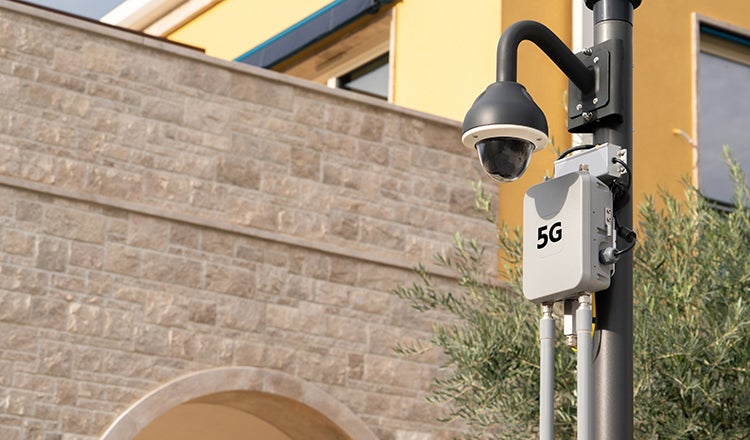Best Practice Standards and Processes for Incorporating Small Cell 5G Infrastructure

Best Practice Standards and Processes for Incorporating Small Cell 5G Infrastructure
The rollout of 5G networks has led to an unprecedented expansion of wireless communication infrastructure across North America. That rapid growth requires new attention from transportation agencies invested in maintaining control over standards for equipment in their right of way.
The Nevada Department of Transportation commissioned HDR to develop a state-of-the-industry analysis to determine best practices across the United States for incorporating small cell technology along state maintained highways.
The analysis included a survey of work done by other public agencies and private communications companies. It culminated with recommendations for Nevada DOT policies, procedures and practices regarding reasonable use of its public rights of way.
Maintaining Design Standards Through New State Guidelines
Developing standards for 5G equipment was critical for the agency to retain control over the design of equipment installed along the state’s roads. In 2018, the Federal Communications Commission required that entities with public, physical right of way must allow reasonable use of that right of way by cellular service providers and cellular infrastructure constructors. This mandate helped to establish a top-down approach to streamline the deployment of 5G small cell equipment.
The FCC order showed the importance of developing guidelines, because transportation agencies and other public entities cannot refuse to allow small cell facilities in their rights of way but they can require the design to meet minimum standards. These standards can address aesthetics, power requirements, structural integrity and more. Perhaps most critically, standards can increase the DOT’s ability to efficiently and effectively perform maintenance on existing systems.
Small cell devices may be placed on existing light poles or traffic signals. Our survey found that many agencies are moving away from this strategy in favor of allowing new purpose-built poles supplied by the applicant, to manage the risk related to existing infrastructure. The development of small cell standards, specifications and special provisions for the Nevada DOT will provide them with the authority to specify the infrastructure, construction methods and materials used in the installation of small cell technology within their right of way.

Survey of Agency Best Practices
To determine the state of the practice, we surveyed a cross section of DOT, county and city agencies across the U.S. The analysis determined trends and best practices regarding the placement of small cell technology equipment. It also addressed power, backhaul, permitting and location requirements, and architectural and aesthetic treatments. A preliminary structural analysis complemented the best practice survey, determining the structure types that could accommodate small cell equipment, including signal poles, ITS poles, lighting poles, dynamic messaging sign structures, utility poles, and communication cabinets.
HDR identified 10 public agencies willing to share their best practices and lessons learned about 5G guidelines that had been previously developed and implemented. Our team engaged these agencies using our communications and technical expertise to draw out key details and identify the most applicable lessons to help the DOT streamline their own processes and avoid encountered challenges and predictable pitfalls.
We provided examples of acceptable and unacceptable installations, showing the DOT the impact of their decisions. Location guidance included information on sight triangles and placement near historic features. Recommendations on considerations for future improvements were developed as well, such as upgrades for connected and automated vehicle technology or electric vehicle charging. As one of the first reports of its kind and because of its tremendous benefit to the DOT, the project won a 2022 Transportation Achievement Award for Planning from the Mountain District Institute of Transportation Engineers.

Valuable Insights Delivered Quickly
With the 5G rollout ongoing, Nevada DOT required the analysis and study on an aggressive timeline. We met early in the process to understand the agency’s goals and what they were trying to accomplish. Working with Nevada DOT, we established an efficient, informed-decision approach toward evaluating structure standards.
Our team delivered the study in February 2022. Noting the benefit of the study, Nevada DOT selected HDR to perform a follow up project, building upon the recommendations in the study to create standards, specifications, processes and procedures for the installation of small cell infrastructure within Nevada DOT right of way.






